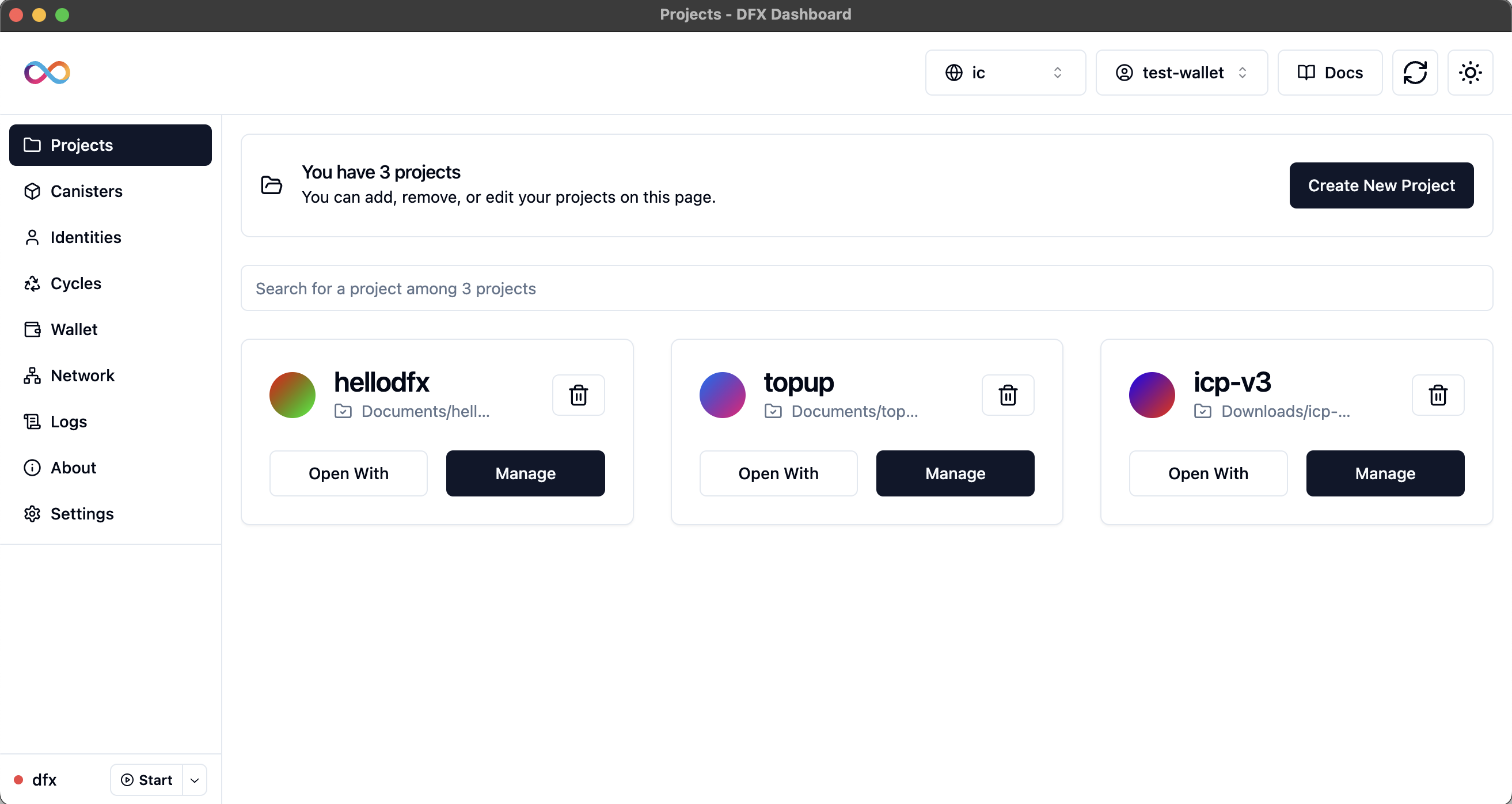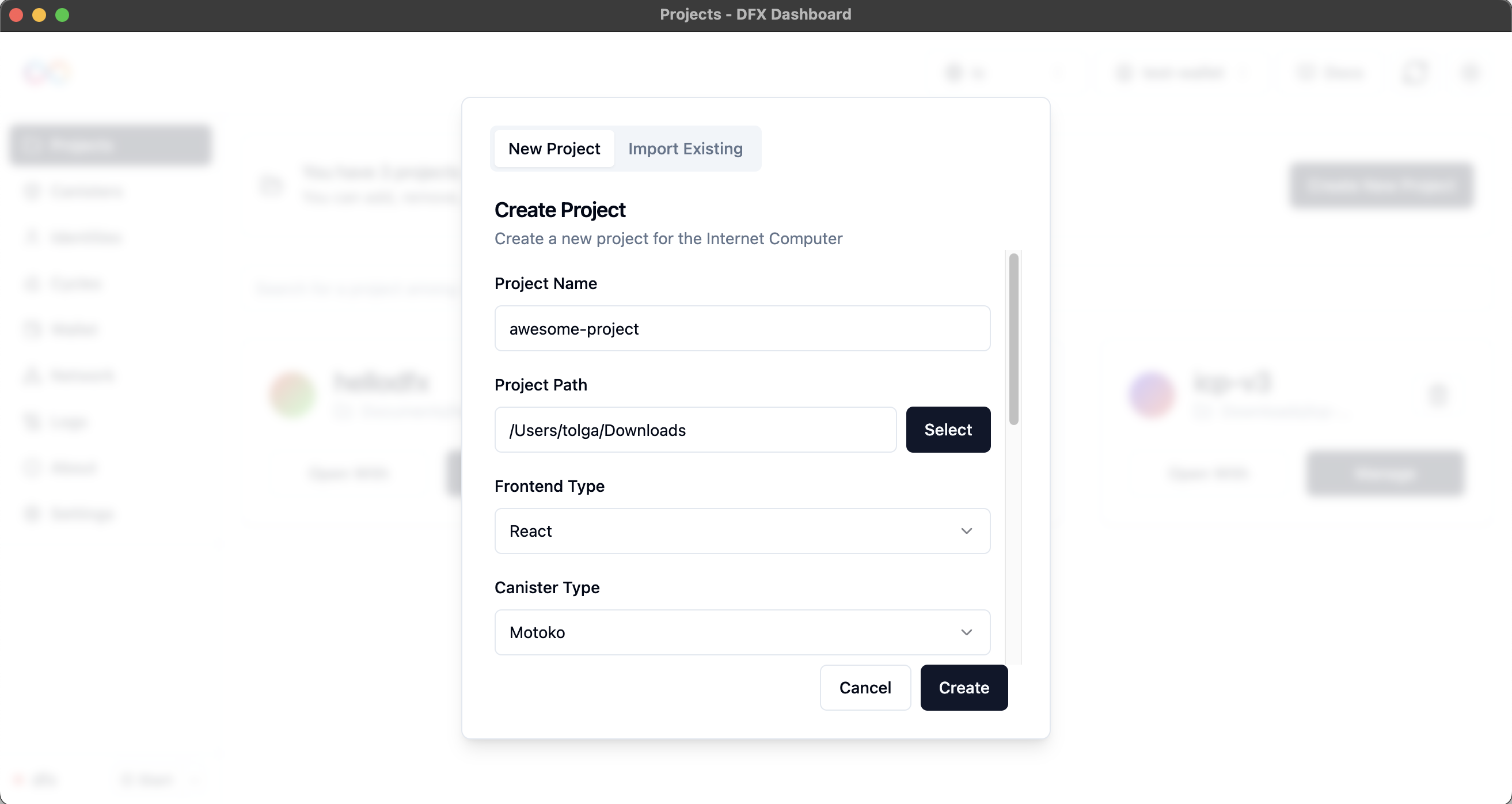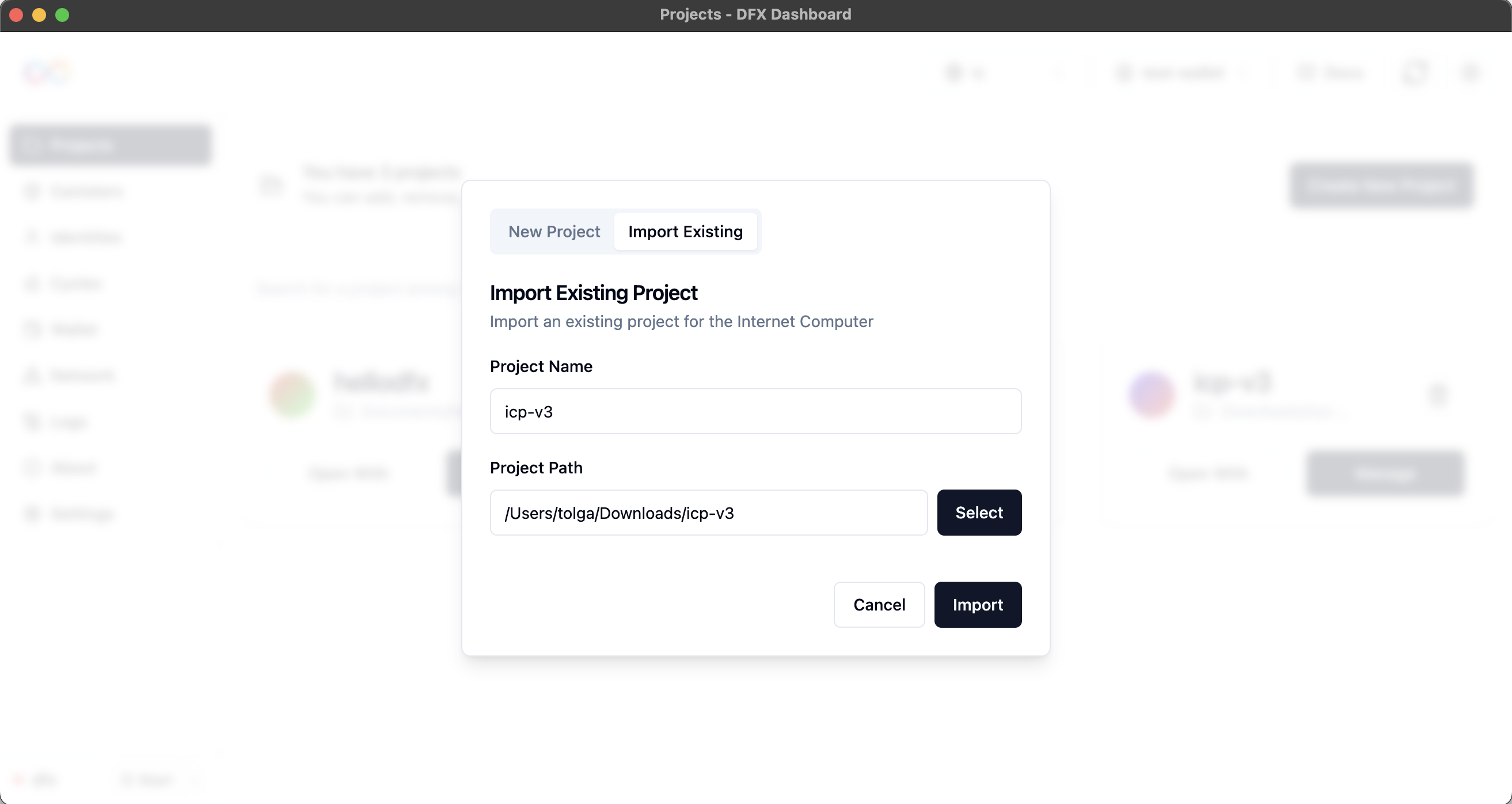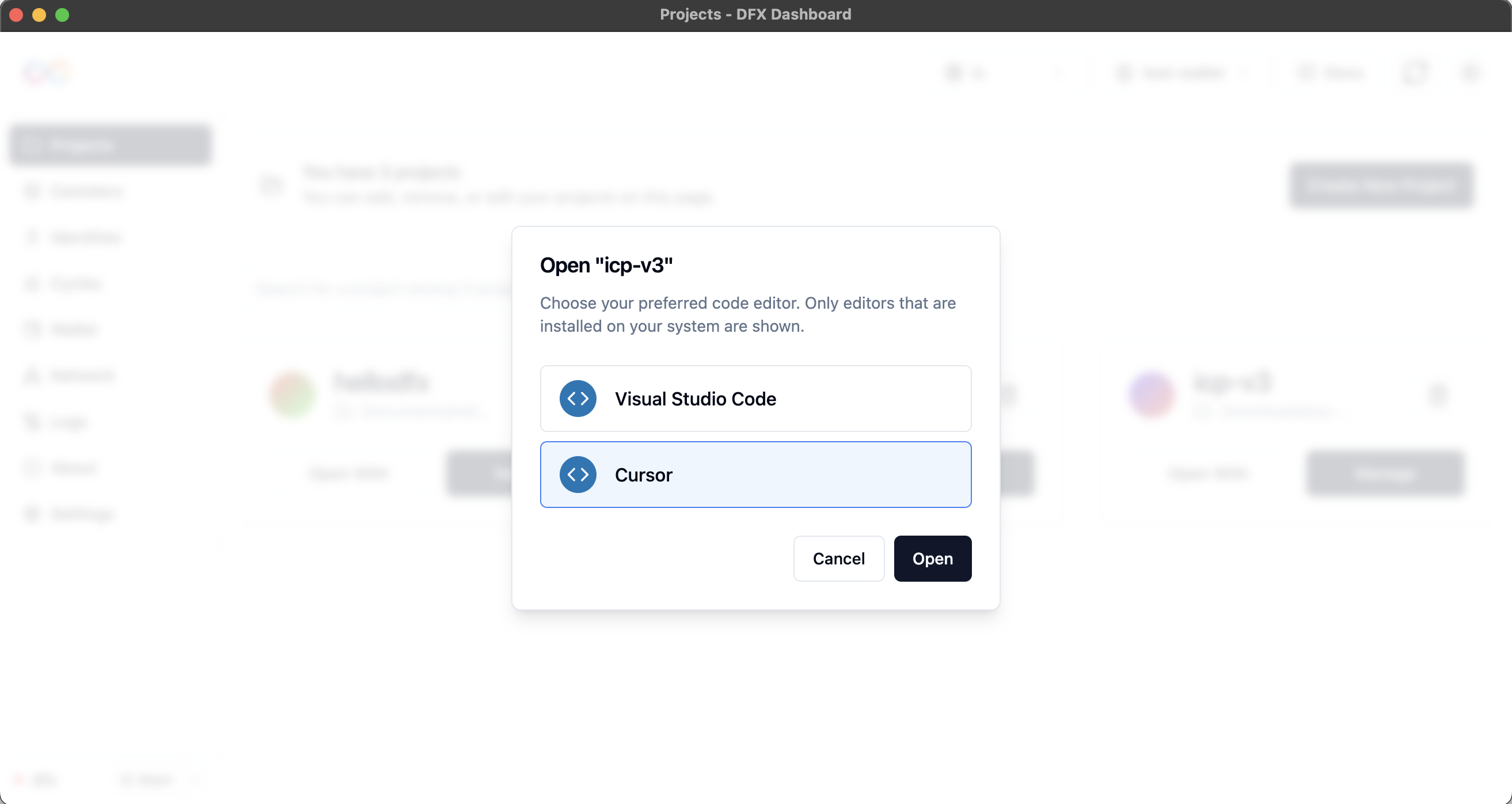Overview
 The Projects page displays a list of all your projects, each represented by a card showing its name and location. Key features include:
The Projects page displays a list of all your projects, each represented by a card showing its name and location. Key features include:
View Projects
See all your projects at a glance with clear project cards
Create Projects
Create new projects with customizable templates
Import Projects
Import existing projects seamlessly
Manage Projects
Manage individual projects with detailed controls
Creating a New Project
1
Start project creation
Click the “Create New Project” button in the top right corner.
2
Select project type
In the modal that appears, select the “New Project” tab.

3
Configure project details
Fill in the project details:
- Project Name: Enter a unique name for your project
- Project Path: Choose where to save your project on your local machine
- Frontend Type: Select your preferred frontend framework (e.g., React, Vue, Svelte)
- Canister Type: Choose the backend canister type (e.g., Motoko, Rust)
4
Create the project
Click “Create” to set up your new project.
Importing an Existing Project
1
Start import process
Click the “Create New Project” button.
2
Select import option
Select the “Import Existing” tab in the modal.

3
Configure import details
Enter the project details:
- Project Name: Provide a name for the imported project
- Project Path: Select the directory of your existing project
4
Complete import
Click “Import” to add the project to DFX Dashboard.
Managing Projects
Take control of your projects with our powerful management tools. Each project card on the main Projects page has two primary actions:- Open With
- Manage
Launch in Code Editor

- Click “Open With” to see a list of installed code editors on your system
- Select your preferred editor to open the project
- Supports popular editors like VS Code, WebStorm, Sublime Text, and more
Project List Features
Navigate and organize your projects effortlessly with these built-in features:Search
Use the search bar to quickly filter projects by name
Project Count
The top of the page displays the total number of projects for easy reference
Pagination
For larger project collections, use pagination controls to navigate between pages
Best Practices
Project Organization
Project Organization
- Use descriptive names for your projects to easily identify them in the dashboard
- Organize your projects into logical folders to maintain a clean workspace
- Group related projects together for better workflow management
Version Management
Version Management
- Regularly update your projects to ensure compatibility with the latest Internet Computer SDK
- Utilize version control systems like Git to track changes and collaborate effectively
- Keep your dfx version consistent across projects for better compatibility
Backup and Security
Backup and Security
- Backup your projects regularly, especially before making major changes
- Store sensitive configuration separately from your main project files
- Use environment variables for network-specific configurations
Troubleshooting
Import Issues
Import Issues
Problem: Project fails to importSolutions:
- Ensure the project directory contains a valid
dfx.jsonfile - Check that the project structure follows dfx conventions
- Verify file permissions in the project directory
Editor Integration
Editor Integration
Problem: Issues opening a project in an editorSolutions:
- Verify that the editor is properly installed on your system
- Check that the editor is in your system PATH
- Try refreshing the DFX Dashboard and attempting again
Project Actions
Project Actions
Problem: Project actions are unresponsiveSolutions:
- Try reloading the DFX Dashboard from the top menu by clicking the reload button
- Check the DFX Dashboard logs for any error messages or warnings
- Ensure your dfx installation is up to date and compatible
Configuration Issues
Configuration Issues
Problem: dfx.json configuration errorsSolutions:
- Validate your JSON syntax using a JSON validator
- Check the dfx documentation for correct configuration format
- Restore from backup if available, or recreate the configuration
Additional Resources
Internet Computer Developer Documentation
Complete guide to IC development
DFX CLI Reference
Official dfx command documentation
GitHub Repository
Source code and issue tracking
Community Forum
Get help from the community
Ready to start working with canisters? Continue to the Canisters page to learn about managing your deployed code.

